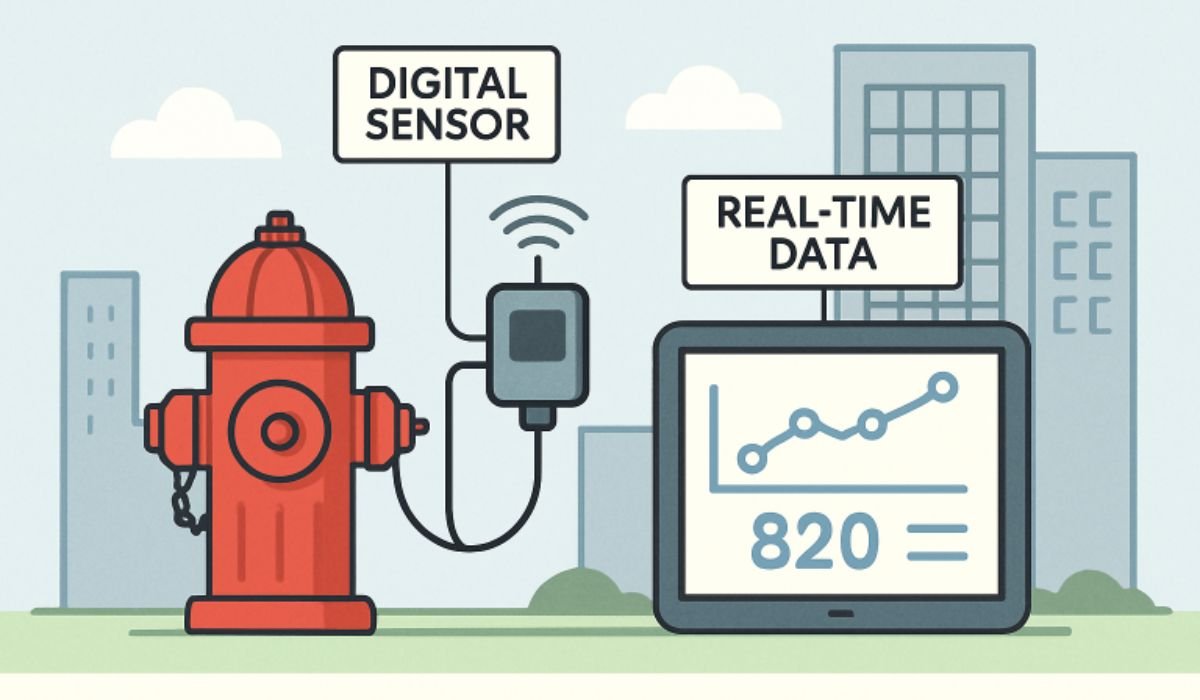Key Takeaways
- Automated fire flow testing greatly improves the accuracy and efficiency of evaluating fire protection water supplies.
- Streamlined data collection and reporting support compliance with stringent safety regulations and reduce human error.
- Over time, integration of automated systems results in measurable cost savings due to reduced labor and maintenance requirements.
Table of Contents
- Introduction
- Benefits of Automated Fire Flow Tests
- Key Components of Automated Testing Systems
- Implementation Considerations
- Real-World Applications
- Conclusion
Introduction
Fire suppression systems in buildings play a crucial role in preventing emergencies. Traditional manual fire flow testing is time-consuming and error-prone. As safety standards increase, the need for automated systems has become more critical. Computerized systems provide reliable, data-driven assurance of infrastructure readiness. The industry is transitioning from manual gauges to digital recordkeeping, cloud-connected sensors, and automatic documentation. Automated testing solutions help safety leaders and facility managers meet accountability and public trust. Ensuring modern buildings are prepared for fire emergencies requires verifying fire protection systems’ effectiveness, reliability, and up-to-code status. This shift is a technological leap forward. Today, however, the growing use of automation is rapidly transforming fire flow testing, increasing efficiency and safety across facilities of all sizes. Automated systems enable faster responses, better data-driven decisions, and elevated standards for life safety within the built environment.
By integrating advanced sensors, analytics software, and robust reporting, building managers and fire protection professionals can identify system deficiencies and ensure ongoing compliance with regulatory mandates. This has a tremendous impact on operational cost, reliability, and overall building safety, setting a new standard for fire protection in commercial, municipal, and industrial spaces. Whether planning new builds or retrofitting legacy systems, automated solutions are rapidly becoming critical for any forward-thinking risk management strategy.
Benefits of Automated Fire Flow Tests
Automated fire flow testing technology delivers several key advantages over manual protocols, driving safer, faster, and more reliable building operation and maintenance:
- Accuracy and Consistency: Automated test systems use advanced pressure transducers and flow meters to collect and transmit precise data in real time. These digital readings provide significantly more consistent results and eliminate subjectivity, ensuring system performance aligns with required standards.
- Efficiency: With automation, testing takes less time and requires fewer personnel, allowing for frequent and more accessible evaluations. This not only reduces operational disruption and system downtime but also helps identify issues proactively, preventing failures before they escalate.
- Compliance: Automated systems create auditable digital records that align with regulations such as those established by the NFPA and local jurisdictions. These detailed records simplify inspections, streamline reporting, and reduce the risk of non-compliance penalties.
- Cost Savings: Upfront investment in automation is often offset by enduring reductions in labor, recurring inspections, and emergency repairs. Digital diagnostics and the ability to schedule tests remotely further unclutter facility staffing demands.
In addition, automation contributes to improved safety for personnel by reducing the need for potentially hazardous manual operations near open hydrants or live system components. This evolution is particularly relevant in large, complex facilities or municipal infrastructure, where testing hundreds of hydrants or risers can quickly overwhelm traditional teams.
Key Components of Automated Testing Systems
Automated fire flow testing systems are engineered to deliver rapid, reliable, and repeatable results. Their core components typically include:
- Digital Pressure Transducers: High-sensitivity sensors that monitor water pressure fluctuations during flow conditions, delivering digital data for instant analysis.
- Flow Meters: Devices that directly measure the volume rate of water passing through a pipeline or hydrant, automatically calculating flow without manual calculations.
- Central Control Units: These are the hub for managing test protocols, collecting data, and sharing results with building automation and fire safety platforms.
- Data Logging and Reporting Software: Customizable platforms that store test history, analyze trends, and generate compliance-ready documentation for stakeholders and regulators.
Some advanced systems incorporate remote access, allowing qualified staff or third-party inspectors to schedule and execute tests from off-site locations—ideal for distributed properties or municipalities with significant geographic spread.
Implementation Considerations
Integrating automated fire flow testing into existing infrastructure requires thoughtful planning to maximize results. Consider the following:
- System Compatibility: Evaluate technical requirements to ensure the system can be integrated with existing hydrants, valves, and risers without extensive modifications.
- Training and Transition: Invest in staff training, including understanding new data interfaces and digital compliance requirements, to facilitate a smooth adoption.
- Regulatory Alignment: Confirm that all hardware and reporting meet local, state, and NFPA regulations to ensure certification and future-proofing against code changes.
- Investment Analysis: Conduct a cost-benefit study weighing upfront expenditures against anticipated savings related to reduced manual labor, improved risk mitigation, and fewer code violations.
Ongoing evaluation of system performance and regular updates ensure that automated solutions continue to provide reliable, actionable safety data as standards and technologies evolve.
Real-World Applications
Across North America, municipalities and large institutions report significant improvements after adopting automated fire flow testing protocols. For example, the City of Santa Ana’s fire hydrant testing initiative stresses the importance of automated equipment and qualified personnel for comprehensive safety assurance, a proven approach for city governments looking to modernize public safety programs.
Likewise, industry’s leading companies offer automated solutions like Potter Electric’s Auto-Test Pressure Switch (ATPS), which enables regular, automated testing of sprinkler system water pressures. These advancements empower facility managers to anticipate failures and guarantee a higher degree of system readiness with less manual intervention, promoting a consistent culture of safety and accountability.
Conclusion
The movement toward automated fire flow testing marks a pivotal advancement in the field of building and life safety. By delivering accurate, efficient, and regulation-ready system evaluations, automated solutions are revolutionizing how property managers, fire inspectors, and engineers maintain the readiness of critical fire protection systems. As these technologies gain wider adoption, the result will be safer buildings, better compliance, and a more sustainable approach to building management and public safety.
YOU MAY ALSO LIKE: Your EDC Just Got Lighter: The Essential Guide to Comfortable and Secure Holsters











